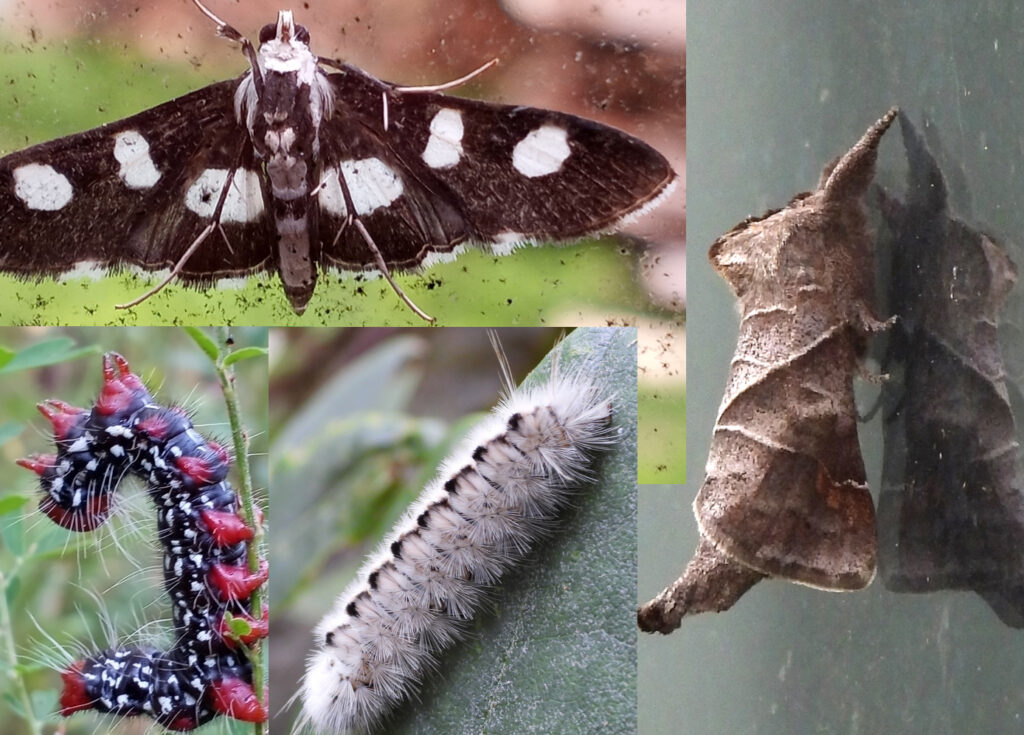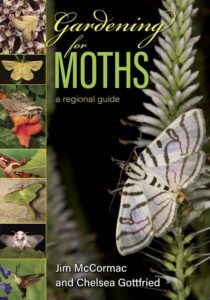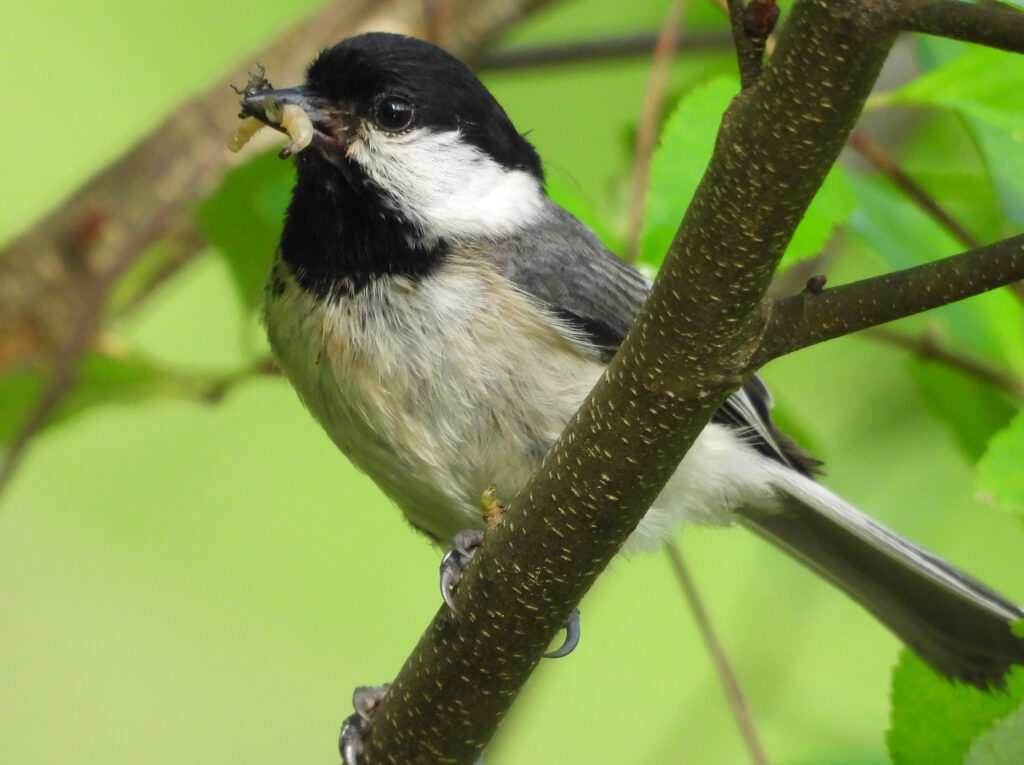
I usually focus on food gardening instead of ornamental gardening both on this blog and in life, but I couldn’t resist sharing some of the pointers I learned at a fascinating library talk last week. Jim McCormac, one of the authors of Gardening for Moths regaled us with a hilarious, beautifully illustrated, and inspiring presentation about why and how to attract moths to our yards. I was definitely sold!
 Why moths matter
Why moths matter
Jim started off by pointing out how important moths are to parts of the ecosystem many of us care about deeply. To start with, lot of those pretty birds I spend so much time photographing enjoy moth caterpillars as a large part of their diet. In fact, moths suffer about 99% mortality between the egg and the adult stage, proof that caterpillars are close to the foundation of lots of food chains. Then, as adults, moths become a favorite food for bats (who will help clear up your mosquito problems, so you definitely want them around).
Moths are also important pollinators, especially for orchids. Any time you see a flower with a long tube or nectar spur, that’s a hint that it’s pollinated by one of the long-tongued pollinators — hummingbirds, butterflies, or very likely moths.
Moth diversity is also astounding. The book covers five states and parts of three others, an area that contains a couple of hundred species of butterflies and a whopping 10,000 species of moths. And since many moths are small and/or active only at night both in adult and caterpillar forms, new species are being found frequently enough that even that huge sum is likely an underestimate.
How to encourage moths

If you want to encourage moths in your yard (and you should if only to feed all the pretty birds!), the simplest way is to plant native species in your flower beds. Like butterflies, many moth caterpillars are host-specific, so they often turn up their noses at plants we bring in from other continents. In contrast, some of our natives are especially heavy hitters when it comes to caterpillar munching — white oaks, native grapevines, sugar maples, and redbuds are great species to start with if you want your local moth population to explode.
Like fireflies, moths get confused by lights at night, so turn off unused exterior lights to give them a wing up. Finally, leaf litter is an important habitat for moths along with lots of other native critters, so don’t rake in the fall (or at least set aside some wild areas as reservoirs for the natives).
One big warning, though: once you start paying attention to moths and their caterpillars, you’ll get sucked in by the colors and patterns. If you get hooked on lepidoptery, it is not my fault!